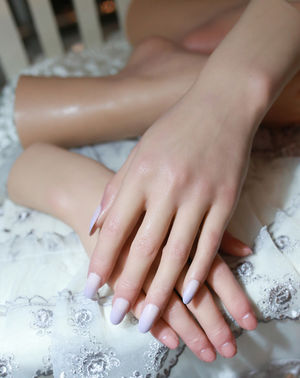foot fetish exists, does hand fetish exsit?why?

Yes, hand fetishes do exist, much like foot fetishes. Both can be understood within the broader context of paraphilias, which are intense sexual interests in non-normative objects, activities, or individuals. To understand why hand fetishes exist, it's helpful to explore the psychological, cultural, and neurological factors that may contribute to this form of sexual attraction.
Psychological Factors
One of the primary psychological theories explaining fetishes involves classical conditioning. This theory suggests that individuals may develop fetishes through repeated associations between specific objects or body parts and sexual arousal. For example, if a person repeatedly experiences sexual arousal in the presence of hands--perhaps through a partner's touch or gestures--that individual might start to associate hands with sexual excitement. Over time, this association can become a fetish.
Neurological Factors
Neurologically, the brain's sensory and pleasure centers play significant roles in fetish development. The somatosensory cortex, which is responsible for processing sensory information from various body parts, is located adjacent to the brain's genital region. This proximity may result in a kind of "cross-wiring" where sensations from one area inadvertently trigger responses in another. This phenomenon could partly explain why fetishes for particular body parts, like hands or feet, develop.
Cultural and Social Influences
Cultural and social factors also contribute to the development of fetishes. Hands are often considered expressive and communicative, conveying a wide range of emotions and intentions. In many cultures, hands are also considered powerful symbols of creativity, craftsmanship, and intimacy. The cultural emphasis on hands as tools of expression and connection can elevate their significance and make them objects of admiration and desire.
Symbolic Significance
Hands carry a deep symbolic significance that can contribute to their fetishistic appeal. They are often seen as extensions of a person's identity and agency, capable of creating, nurturing, and destroying. In some psychological frameworks, hands can be seen as representations of power and control, which can be erotically charged for some individuals. The act of touching, holding, or caressing with hands can be deeply intimate and emotionally resonant, adding layers of meaning to the fetish.
Media and Representation
Media representations also play a crucial role in shaping and reinforcing fetishes. Hands are often highlighted in visual media, including films, advertisements, and art, as symbols of elegance, strength, and sensuality. Close-up shots of hands performing delicate or powerful actions can evoke strong emotional and sexual responses. Over time, these representations can influence individual preferences and contribute to the development of a hand fetish.
Personal Experiences
Personal experiences and individual differences also account for the development of fetishes. For some, a significant or memorable experience involving hands may leave a lasting impression that shapes their sexual preferences. These experiences can vary widely, from a formative relationship to a single moment of intense emotional or physical connection involving hands.
Conclusion
In summary, hand fetishes, like foot fetishes, are complex phenomena influenced by a combination of psychological, neurological, cultural, and personal factors. The human brain's capacity for creating associations, combined with the symbolic and practical significance of hands, makes them potential objects of fetishistic attraction. Understanding these factors provides a comprehensive view of how and why such fetishes develop, highlighting the intricate interplay between mind, body, and culture in shaping human sexuality.
Share this page to your social media:
